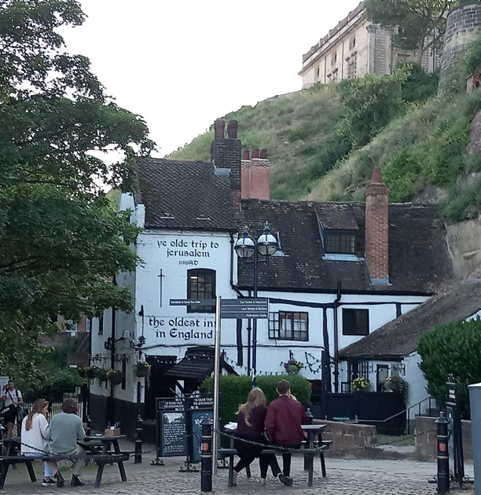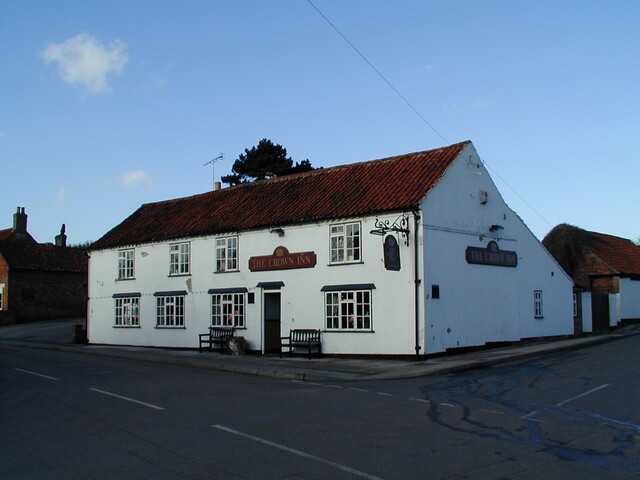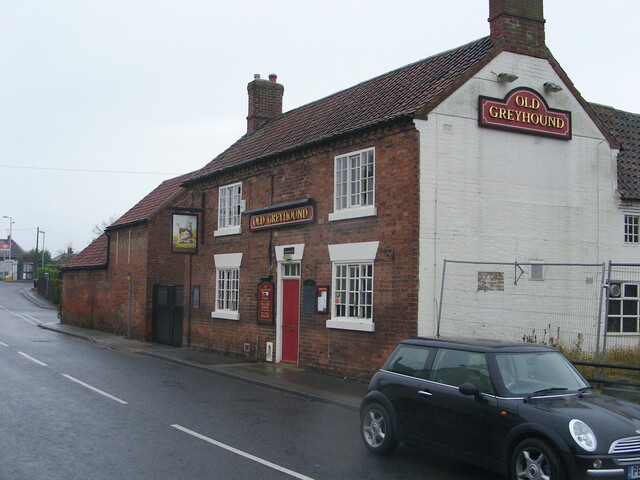What’s in a Name? The History of Pubs in Nottinghamshire
- Posted in:
- Heritage
- HistoricBuildings
Pubs have been an important part of life in Nottinghamshire for centuries, not only providing refreshments but as the focus of community life. The origin of pubs can be traced back to the Roman period when ‘Tabernae' selling wine were set up along roads and in towns. In the Medieval period, Alehouses emerged. These were private homes where the householder brewed ale. The brewing process meant ale was safer to drink than water. Taverns were built to accommodate more people and to offer food, and larger Inns were built to include lodgings and accommodation for travellers. Collectively, these establishments are known as public houses (pubs).
Many old pubs are listed by Historic England or Locally Listed by local planning authorities to conserve them as an important part of our cultural heritage. More than 200 public houses are recorded in the Nottinghamshire Historic Environment Record (HER). Use this link here and enter ‘public houses’ to see the complete list.
Nottingham has a claim to the oldest surviving pub in England - the famous ‘Trip to Jerusalem’ inn carved into the rock below the castle, is said to date to 1189 AD. It is reputed to have been used as a recruitment centre for knights signing up to join King Richard I on the Crusades. The earliest parts of the timber structure date that survive today, date to the early 17th century. The pub was Grade II listed in 1952.

Above: The famous Ye Olde Trip to Jerusalem pub
Many of our old pub buildings have historic value. They often retain original features such as timber frames, flagstone floors, and leaded windows. Their building style, construction type and materials vary. The name of the pub often reflects local history, referring to historical people, landscape features, animals, hobbies and occupations.
Pub names are often based on heraldic symbols. The most common pub name in Britain is The Red Lion, originally the heraldic symbol of King James I. Six are recorded in the Nottinghamshire Historic Environment Record (two are now domestic houses). Other heraldic symbols include Lions, Dragons, Unicorns, Griffin, and Crowns.
Examples include:
- The Red Lion (Wellow)
- Green Dragon (Hucknall)
- The Unicorns Head (Langar)
- The Griffins Head (Papplewick)
- The Crown Inn (East Markham)

Above: The 18th-century 'Crown Inn' at East Markham. Check out the HER record here
Other pub names refer directly to Kings and Queens, famous people and local aristocracy:
- The Queens Head (Newark)
- Duke William (William the Conqueror) (Askham)
- The Manvers Arms (Radcliffe-on-Trent)
- The Portland Arms (Hucknall)
- The Pauncefoot Arms (East Stoke)

Above: The sixteenth century ‘The Queens Head’ at Newark. Check out the HER record here

Above: 'The Manvers Arms' at Radcliffe on Trent. Check out the HER record here
Other pub names can give us clues about the landscape, names such as The Willow Tree, and Bridge Tavern. Names may be based on local wildlife, such as The Black Swan or The Fox. Some tell us about the interactions between humans and animals, The Butcher and the Bull or The Jolly Angler or even domestic animals like The Greyhound. Other pub names mention local industry and pastimes: Miners, Blacksmiths, Carpenters, Gardeners, and Cricketers to name a few.
- The Willow Tree (Barnby in the Willows)
- The Fox Inn (Kelham)
- The Jolly Angler (Beeston)
- The Greyhound (Aslockton)
- The Miners Arms (Huthwaite)

Above: The Old Greyhound Public House at Aslockton. An early nineteenth-century stable and coach house. Check out the HER record here
Like the rest of the UK, Nottinghamshire has seen a decline in the number of pubs over the last couple of decades. Increased costs, changing drinking habits and the smoking ban have made running traditional pubs more difficult and resulted in the closure of many pubs. Often the buildings are converted into homes or businesses. Statutory Listing, Local Listing and Listing as Assets of Community Value (ACV) are all designed to conserve these historic buildings.
